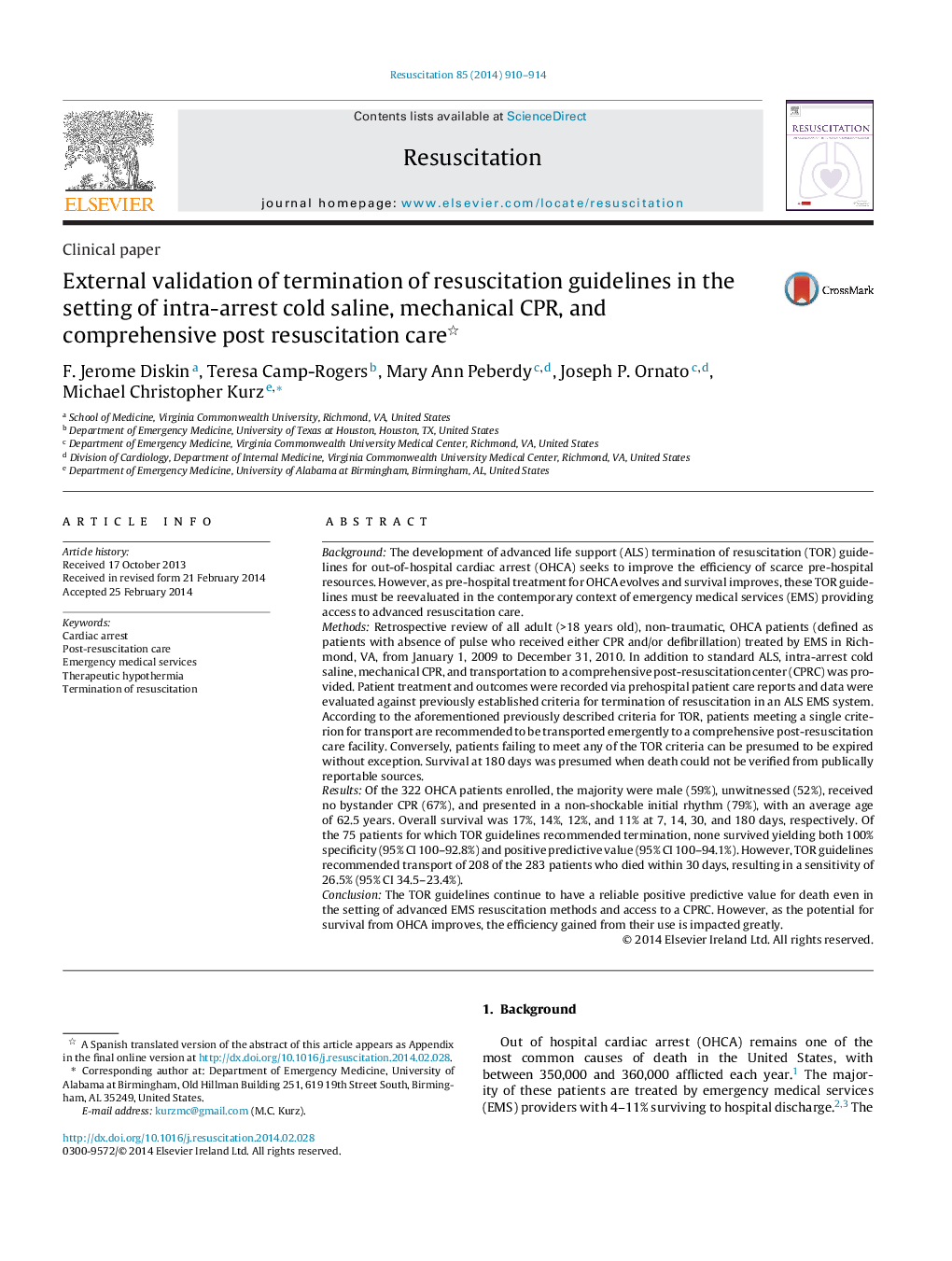| کد مقاله | کد نشریه | سال انتشار | مقاله انگلیسی | نسخه تمام متن |
|---|---|---|---|---|
| 5998471 | 1181442 | 2014 | 5 صفحه PDF | دانلود رایگان |

BackgroundThe development of advanced life support (ALS) termination of resuscitation (TOR) guidelines for out-of-hospital cardiac arrest (OHCA) seeks to improve the efficiency of scarce pre-hospital resources. However, as pre-hospital treatment for OHCA evolves and survival improves, these TOR guidelines must be reevaluated in the contemporary context of emergency medical services (EMS) providing access to advanced resuscitation care.MethodsRetrospective review of all adult (>18 years old), non-traumatic, OHCA patients (defined as patients with absence of pulse who received either CPR and/or defibrillation) treated by EMS in Richmond, VA, from January 1, 2009 to December 31, 2010. In addition to standard ALS, intra-arrest cold saline, mechanical CPR, and transportation to a comprehensive post-resuscitation center (CPRC) was provided. Patient treatment and outcomes were recorded via prehospital patient care reports and data were evaluated against previously established criteria for termination of resuscitation in an ALS EMS system. According to the aforementioned previously described criteria for TOR, patients meeting a single criterion for transport are recommended to be transported emergently to a comprehensive post-resuscitation care facility. Conversely, patients failing to meet any of the TOR criteria can be presumed to be expired without exception. Survival at 180 days was presumed when death could not be verified from publically reportable sources.ResultsOf the 322 OHCA patients enrolled, the majority were male (59%), unwitnessed (52%), received no bystander CPR (67%), and presented in a non-shockable initial rhythm (79%), with an average age of 62.5 years. Overall survival was 17%, 14%, 12%, and 11% at 7, 14, 30, and 180 days, respectively. Of the 75 patients for which TOR guidelines recommended termination, none survived yielding both 100% specificity (95% CI 100-92.8%) and positive predictive value (95% CI 100-94.1%). However, TOR guidelines recommended transport of 208 of the 283 patients who died within 30 days, resulting in a sensitivity of 26.5% (95% CI 34.5-23.4%).ConclusionThe TOR guidelines continue to have a reliable positive predictive value for death even in the setting of advanced EMS resuscitation methods and access to a CPRC. However, as the potential for survival from OHCA improves, the efficiency gained from their use is impacted greatly.
Journal: Resuscitation - Volume 85, Issue 7, July 2014, Pages 910-914